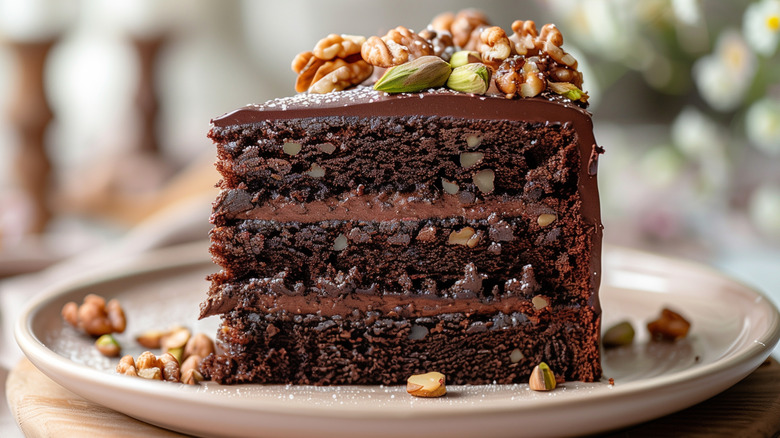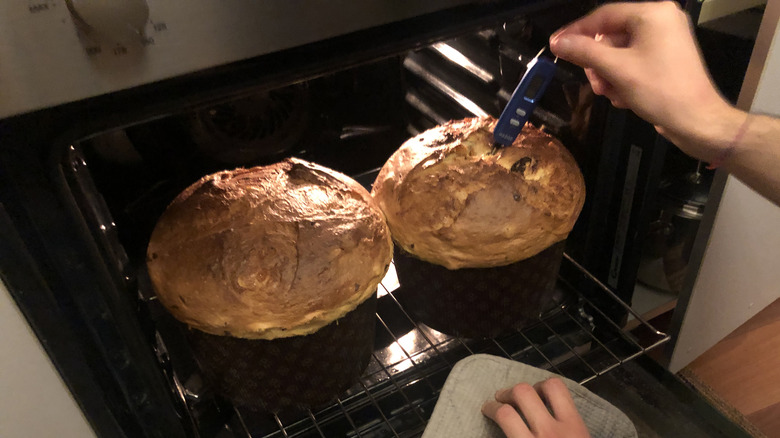2 Pro Tips To Make Sure Your Cake Comes Out Moist Every Time
When it comes to a moist and tender cake, stop worrying so much about altering the number of eggs in a recipe, increasing the fat, or finding that perfect secret ingredient. According to Jake Cohen, best-selling cookbook author, Instagram famous chef, and star of the new A+E Networks' show "Jake Makes It Easy," it is all in the technique. Cohen told Food Republic, "It's not about adding ingredients. It's about not overworking the batter and baking it properly."
The impulse for many bakers when combining wet and dry ingredients is to mix thoroughly and vigorously. However, when you beat the life out of a batter, the final product often comes out of the oven hard and dense. That is because, as you stir, the gluten strands start to develop and strengthen. This is ideal when you want chewy bread and toothsome pasta, which is why kneading (and even smacking the dough as Juila Child does) is a crucial step in those recipes. However, for a soft and tender cake, mixing too much brings unwelcome elasticity.
On the other hand, undermixing the dough will not allow enough gluten to develop, resulting in a cake that fails to fully rise. Your best bet is to follow the recipe's instructions and stop when the batter is just combined — though it should not have large lumps or streaks of flour. If you are making a cake that calls for incorporating whipped egg whites, be extra careful to gently and minimally fold to avoid knocking out that air.
Be precise with the temperature
When chef Jake Cohen says that a cake should be baked properly, he is not just relying on visual cues, cooking times, and tester sticks. While techniques like looking for a golden brown top can sometimes be a helpful indication of doneness, it's nearly impossible to gauge for any cake that is darker in color, like a chocolate number or a vibrant red velvet cake. Cohen takes a more precise approach. "I bake all my cakes by internal temperature to make sure they come out moist," he told Food Republic.
A digital, instant-read thermometer is useful here, so you can quickly get a reading without the cake or oven losing too much heat. Insert it into the center of the cake, being careful not to pierce so deep that you touch the bottom of the pan.
Between 200 and 210 degrees Fahrenheit is the target range here, depending on the type of cake. For fudgy, chocolatey, flourless, or dense cakes with lots of moist add-ins like carrots, bananas, or fresh fruit, aim for between 200 and 205 degrees Fahrenheit. Lighter cakes should be baked until closer to 210 degrees Fahrenheit. Not only is a thermometer useful for ensuring that your cake does not come out dry and crumbly, but it also helps you avoid the gummy and stodgy texture that arises from underbaking.


